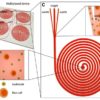Science and technology are becoming more democratized, and more a part of public debate. At the same time, there is great distrust towards advanced biomedical and life sciences technology1. Public relations and controversy management are very important, but underrated, skills for scientists. It is a good practice to make a habit of imagining how a topic or technology may be presented by the media and perceived by the public. Organ on a chip devices may be a good exercise on how scientists could influence how their work may be received.
In one sense, organ on a chip devices are becoming more complex, as evidenced by the March 2018 announcement of an organ on a chip device that can model up to 10 organs and their interactions for a continuous 1 month run2. In another sense, organ on a chip models are still very simplistic, as they don’t yet feature the multi-tissue structure that defines an organ. Most organ on a chip applications feature a channel or chamber in which cells are cultured, and interact with various factors, such as a liquid phase flowing adjacent to the cells, which simulates blood flow around the tissue3. However, the name “organ on a chip” paints a very different picture. A lay person who hears this term would never picture the relatively simple devices which are used today. This is where it may be worth examining organ on a chip as a PR case study for scientists.
With the increasing scientific use and commercialization of lab on a chip devices in general, it is likely that in a few years the terms “lab on a chip” and “organ on a chip” will become familiar to the general public. At that point, the name “organ on a chip” will present a problem because “organ on a chip” paints a vivid picture, but that picture is very inaccurate, and a little alarming. Many may think that these devices include full organs that are connected to some sort of chip, maybe an electronic one. Currently, the only people who have heard of this technology have read something about it. Once “organ on a chip” is a household term, it must be expected that there will be a portion of the public who have heard of the term but have no idea what it looks like, or what it does.
In that case, organ on a chip technology may face unnecessary opposition from the public, who do not want lab experiments that use human or animal organs. The myth that artificial organs are grown on chips may come about. Artificially making organs is a controversial idea that has faced ethical or religious objections, with 23% of Americans reported to oppose bioengineered organs for medical use in a 2015 report4. Of course, these objections have nothing to do with the actual organ on a chip technology, but it is possible that Organ on a chip researchers face them anyway from a public who is misled by the evocative name of the technology.
Cloning and stem cell technologies have faced similar problems before. Some of the objections to these technologies have come from myths about them, such as cloning technology being used to fully replicate an adult5. Could organ on a chip also face public opposition based on a misunderstanding of what it really is?
It is possible. First, organ on a chip would have to become a commonly recognized term. This is likely to happen as exciting breakthroughs continue to get news coverage. At that point, some people will likely associate the term with artificial organs and could oppose the idea. Whether such opposition would get any momentum may not be so much up to the scientific community. For example, if an influential TV personality started to denounce it, organ on a chip could be a hot topic. Unfortunately, some technologies are criticized or opposed based on perceived issues that are not in line with reality.
What about legislation and politics? In the US, stem cell research has been restricted or banned in many states, and federal funding for it has been restricted in the past. GMOs are heavily regulated around the world as well. However, major political resistance against organ on a chip devices are not likely, even if the public perceives the same problems with organ on a chip devices. This is because stem cell research and GMOs are very clearly defined in terms of the techniques involved. Stem cell legislation has usually defined its scope specifically based on whether embryos are involved, and how they are obtained6. In the case of an organ on a chip, there is not a specific technique or process step that could be targeted by legislation. It is simply a new configuration for in vitro models and microfluidic devices. This points to another reason serious opposition may never happen –would be leaders of activism against organ on a chip would first find out more about organs on a chip, and learning more about the technology could dissuade most from opposing it.
Where would this leave a potential controversy? There may or may not be a short time of 1-2 years where organs on a chip become well known, and then become a hotly debated technique. The vicissitudes of politics and media would be a big, unpredictable factor there. A lasting stigma is not likely; organs on a chip would be just another technology that some people really misunderstand. However, there is a takeaway for the scientific community. There is a lesson on managing the message and the image here, and the importance of names is obvious. By picking this very evocative, but misleading name, have we invited trouble? Will we later have to correct myths, be opposed by the public and spend our time answering nonsensical questions?
Should we have purposefully picked a different name? Should we look for an alternative now? Probably not, but it is good to think about the subject. What we should do in the future is to think from this marketing perspective every now and then, especially when coining a new term, or announcing a breakthrough. Scientists have the most control over the message when they are reporting their work – until they announce it, the world does not know about it. We should take advantage of that moment.
1. Funk, C., 2017. “Real Numbers: Mixed Messages about Public Trust in Science.” Issues in Science and Technology, 34(1), 86-88.
2. Hamzelou, J., 2018. “Miniature organs mimic human body.” New Scientist 27(3170), 1025-1031.
3. Bhatia, S. N., Ingber, D. E., 2014. “Microfluidic organs-on-chips.” Nature Biotechnology 32(8), 760-772.
4. Funk, C., Raine, L., Page, D., 2015. “Americans, politics and science issues.” Pew Research Center.
5. Miller, R. G., 2006. “Cloning: A critical analysis of myths and media.” Science Scope, 29(6), 70-74.
6. Pew Research Center, 2001. “Human Cloning: Religious Perspectives.” http://www.pewforum.org/2001/05/03/human-cloning-religious-perspectives/ (See Mr. Wasinger’s comments)
Enjoyed this article? Don’t forget to share.

Aytug Gencoglu
Aytug Gencoglu has a decade of microfluidics experience, primarily in academic labs. He has previously published articles on electrode deterioration, pH changes in microfluidic channels, and dielectrophoresis, and developed microfluidics components for dielectrophoretic cell characterization.




